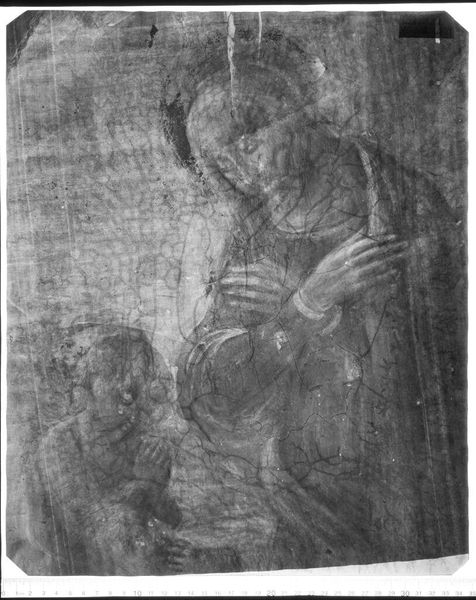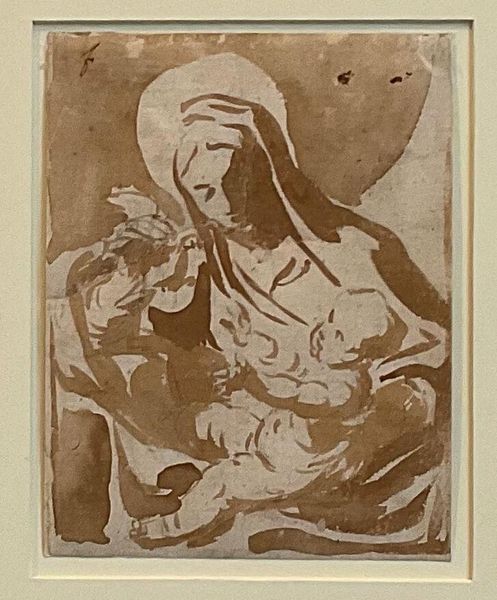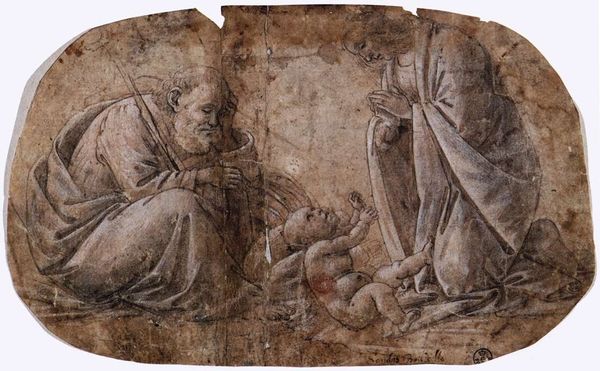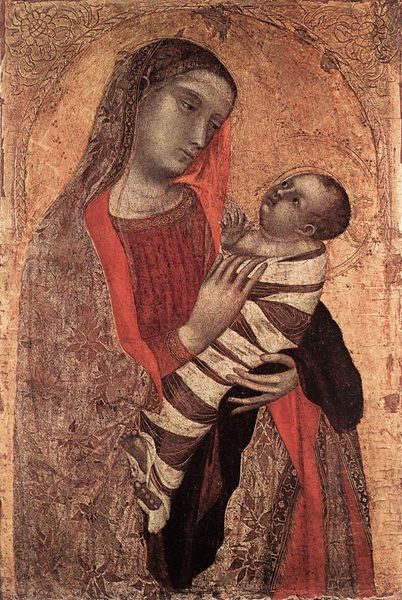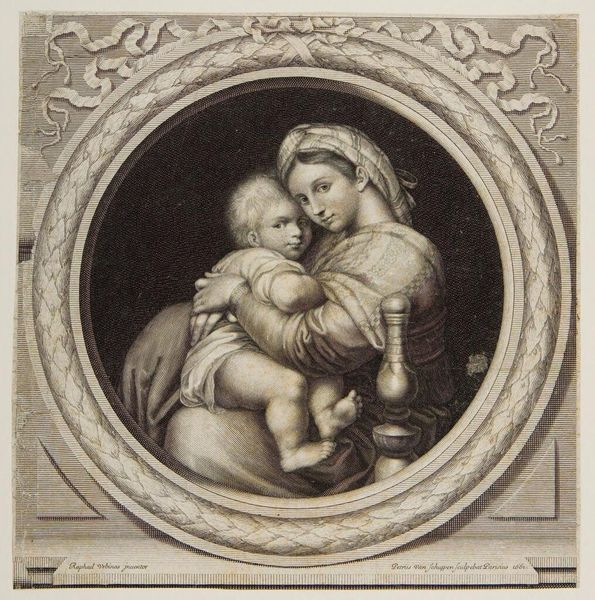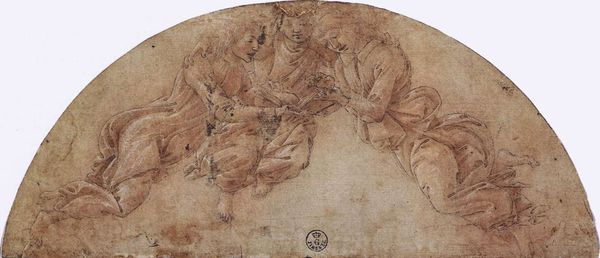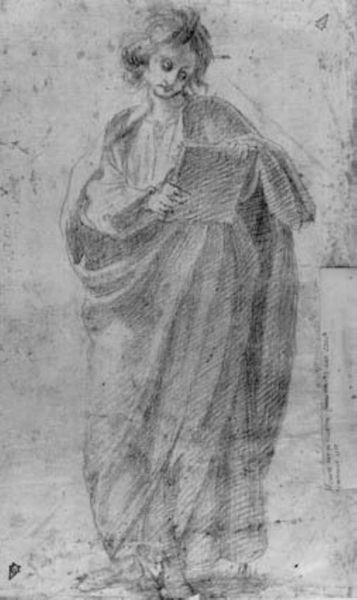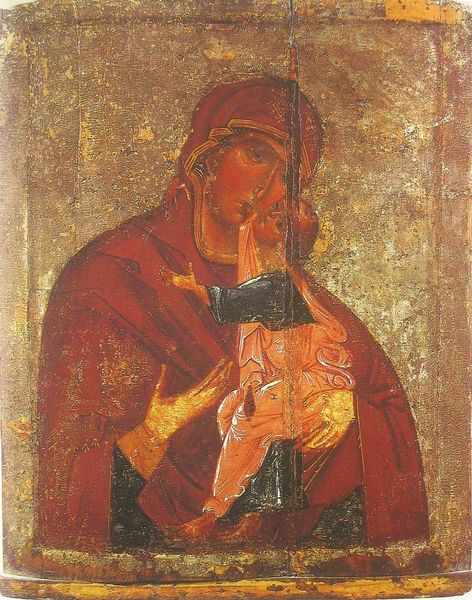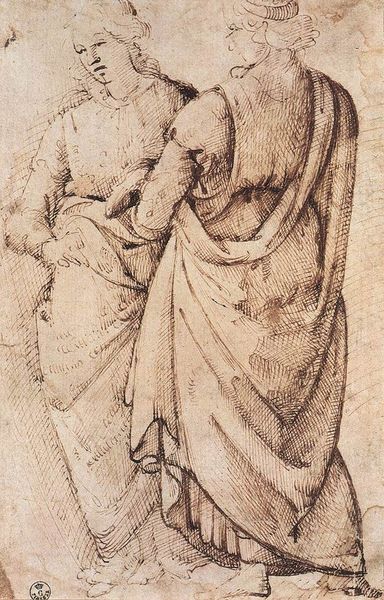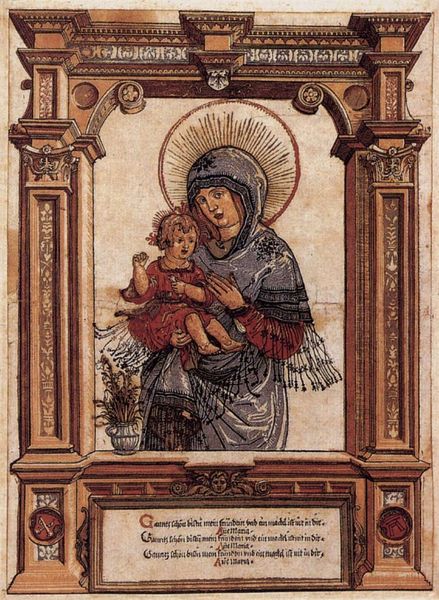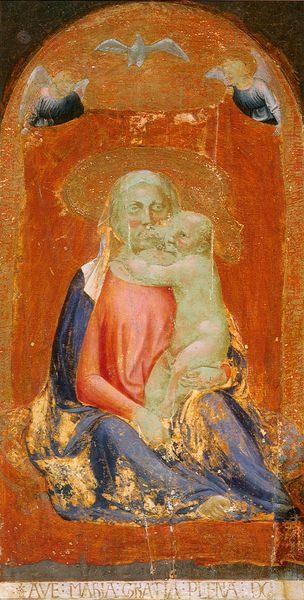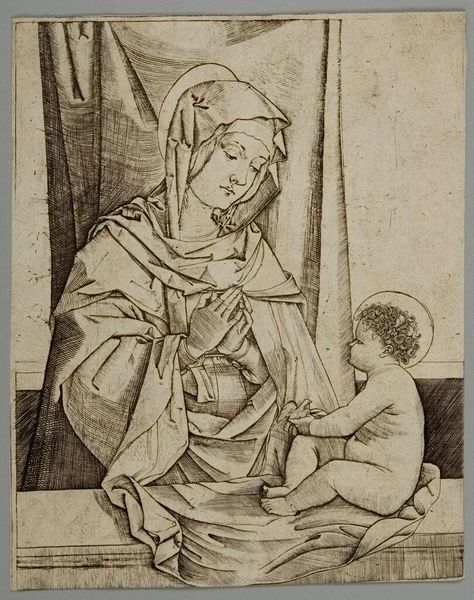
tempera, painting
#
portrait
#
tempera
#
painting
#
figuration
#
child
#
christianity
#
history-painting
#
italian-renaissance
#
early-renaissance
#
virgin-mary
#
miniature
#
christ
Copyright: Public domain
Fra Angelico, an artist deeply devoted to his faith, likely created this Virgin and Child in Italy sometime in the early to mid-1400s. We can see Mary holding the infant Jesus, both figures framed by halos. Consider the cultural and institutional context in which Fra Angelico was working. As a Dominican friar, his artistic production was deeply intertwined with the Church. His works were not just personal expressions, but visual sermons intended to inspire faith. This image would have served to reinforce religious doctrine, to promote the Church’s teachings about the Virgin Mary as the mother of God, and to show the young Jesus as his divine son. As art historians, we can look at the patronage systems of the time, the artistic conventions being taught in workshops, and the theological debates within the Church, to better understand the forces that shaped this artwork. By exploring these avenues, we see that the meaning of art is always a product of its social and institutional environment.
Comments
No comments
Be the first to comment and join the conversation on the ultimate creative platform.
